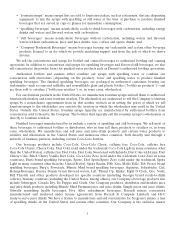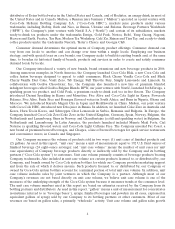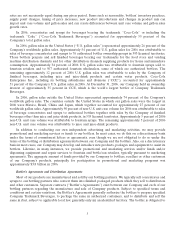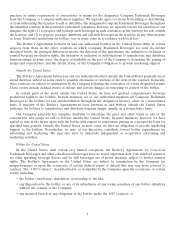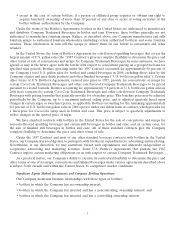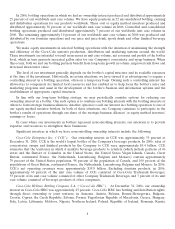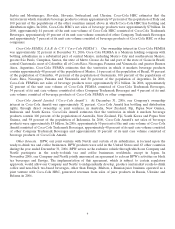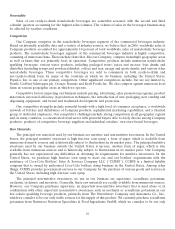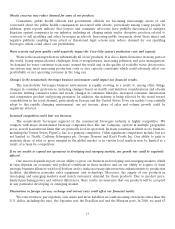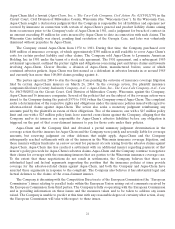Coca Cola 2006 Annual Report Download - page 15
Download and view the complete annual report
Please find page 15 of the 2006 Coca Cola annual report below. You can navigate through the pages in the report by either clicking on the pages listed below, or by using the keyword search tool below to find specific information within the annual report.Obesity concerns may reduce demand for some of our products.
Consumers, public health officials and government officials are becoming increasingly aware of and
concerned about the public health consequences associated with obesity, particularly among young people. In
addition, press reports indicate that lawyers and consumer advocates have publicly threatened to instigate
litigation against companies in our industry, including us, alleging unfair and/or deceptive practices related to
contracts to sell sparkling and other beverages in schools. Increasing public awareness about these issues and
negative publicity resulting from actual or threatened legal actions may reduce demand for our sparkling
beverages, which could affect our profitability.
Water scarcity and poor quality could negatively impact the Coca-Cola system’s production costs and capacity.
Water is the main ingredient in substantially all of our products. It is also a limited resource in many parts of
the world, facing unprecedented challenges from overexploitation, increasing pollution and poor management.
As demand for water continues to increase around the world and as the quality of available water deteriorates,
our system may incur increasing production costs or face capacity constraints which could adversely affect our
profitability or net operating revenues in the long run.
Changes in the nonalcoholic beverages business environment could impact our financial results.
The nonalcoholic beverages business environment is rapidly evolving as a result of, among other things,
changes in consumer preferences, including changes based on health and nutrition considerations and obesity
concerns, shifting consumer tastes and needs, changes in consumer lifestyles, increased consumer information
and competitive product and pricing pressures. In addition, the industry is being affected by the trend toward
consolidation in the retail channel, particularly in Europe and the United States. If we are unable to successfully
adapt to this rapidly changing environment, our net income, share of sales and volume growth could be
negatively affected.
Increased competition could hurt our business.
The nonalcoholic beverages segment of the commercial beverages industry is highly competitive. We
compete with major international beverage companies that, like our Company, operate in multiple geographic
areas, as well as numerous firms that are primarily local in operation. In many countries in which we do business,
including the United States, PepsiCo, Inc. is a primary competitor. Other significant competitors include, but are
not limited to, Nestl´
e, Cadbury Schweppes plc, Groupe Danone and Kraft Foods Inc. Our ability to gain or
maintain share of sales or gross margins in the global market or in various local markets may be limited as a
result of actions by competitors.
If we are unable to expand our operations in developing and emerging markets, our growth rate could be negatively
affected.
Our success depends in part on our ability to grow our business in developing and emerging markets, which
in turn depends on economic and political conditions in those markets and on our ability to acquire or form
strategic business alliances with local bottlers and to make necessary infrastructure enhancements to production
facilities, distribution networks, sales equipment and technology. Moreover, the supply of our products in
developing and emerging markets must match customers’ demand for those products. Due to product price,
limited purchasing power and cultural differences, there can be no assurance that our products will be accepted
in any particular developing or emerging market.
Fluctuations in foreign currency exchange and interest rates could affect our financial results.
We earn revenues, pay expenses, own assets and incur liabilities in countries using currencies other than the
U.S. dollar, including the euro, the Japanese yen, the Brazilian real and the Mexican peso. In 2006, we used 63
13


